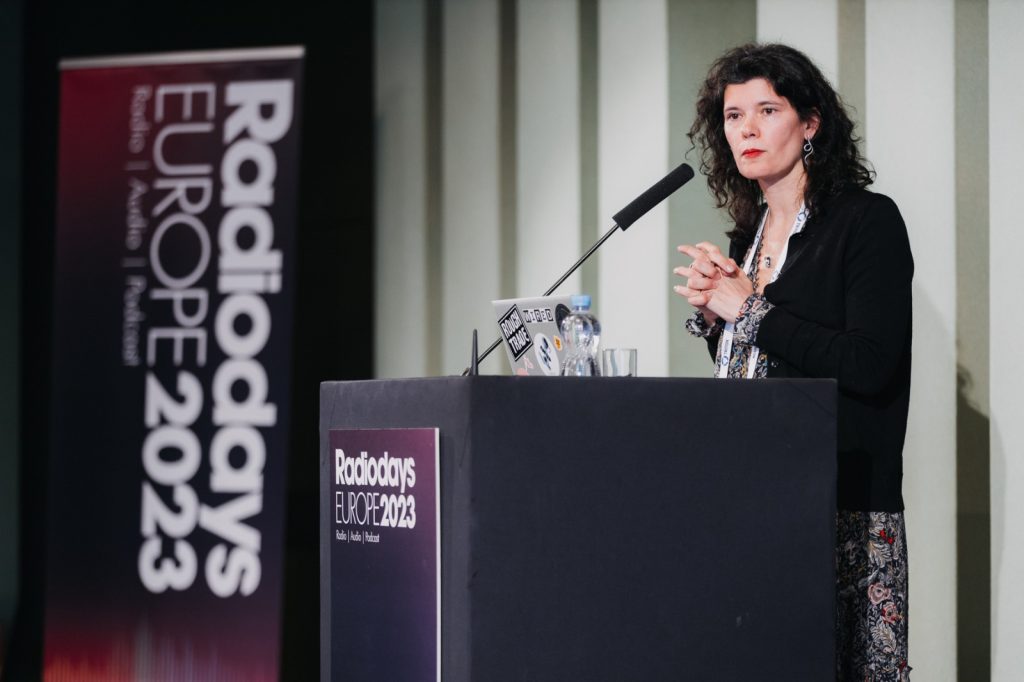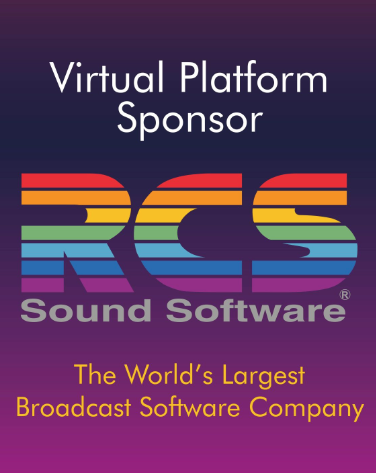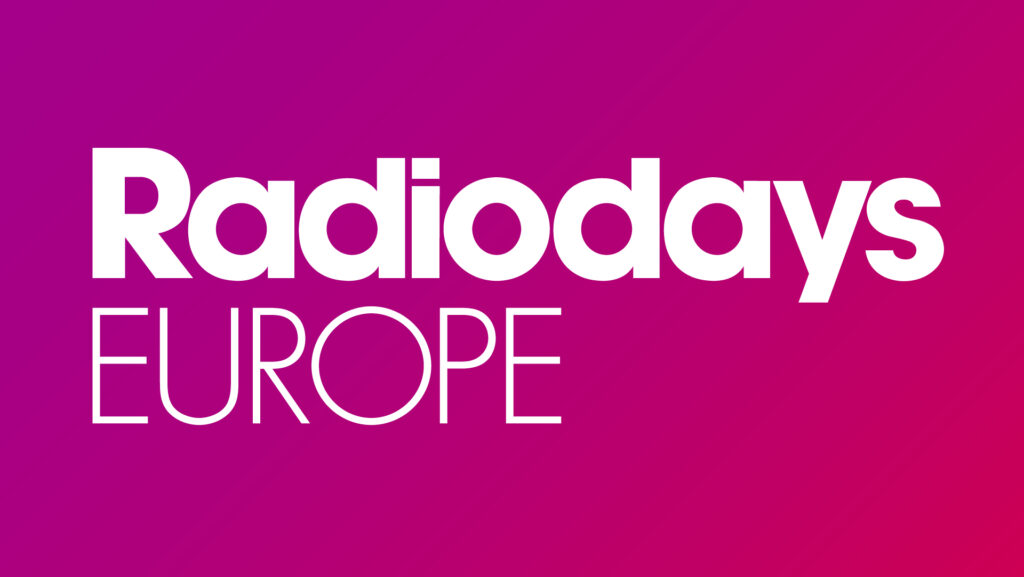The collaboration of AI and humans
How realistic is it to have a purely AI-driven newsroom? The founder and director of HEI-DA, Marianne Bouchart introduces us to various AI techniques that journalists use nowadays. By no means AI is able to replace humans – yet. However, Marianne gives us examples that show about how much AI can ease and speed up the journalists’ work. When she asked the attendees about their use of AI, such as ChatGPT, almost the whole auditorium raised their hands. Although the start was a bit scary because the listeners were introduced to RadioGPT – an AI software which synthesizes human-like voices – and they were truly realistic. She mentions techniques such as natural language processing, voice cloning, predictive analytics, personalization, automated editing, clustering algorithms and topic modeling. She also unveils how AI can be used for personalization of content in TikTok or how it is being used in fighting the deforestation of tropical forests. And for the rap fans out there – Marianne commanded Chatsonic, AI software similar to ChatGPT, to write a rap song in the style of Kendrick Lamar. Has it fulfilled its request? Check for yourself: https://docs.google.com/document/d/1Y5d-ON-K3Mny_myqe4s412TRMtf1yOrDhNU9wVGhE_4/edit
Factchecking the statistics with Statcheck
How successfully and efficiently can we debunk fake news with the help of AI? Surprisingly – almost completely flawlessly. The deputy head of a radio network France Info Estelle Cognacq introduces Statcheck – a free software that detects errors in news, made in cooperation with French Institute for Research in Computer Science and Automation (INRIA). The software can analyse statistics in Twitter, filter them by author, date and other criteria. Not only text, the software can also transcribe and analyse audio recordings.
Make the listener stay using RadioAnalyzer
By presenting a radio company RadioAnalyzer, development producer Kim Ohlssonfrom the Swedish Radio shows us how they use predictive analytics based on observations of the radio listeners. They believe that collecting the data by asking the listeners what they want is too slow and the results unsatisfactory. Data are collected from both FM and digital streams.
Radioanalyzer’s main feature is the ability to look at the data and listen to the radio programme simultaneously. The software does a graph, an hour overview, with the curve of listener’s engagement and distribution of music and spoken word. When the curve decreases in certain moments we can play the broadcast itself and see (listen why that happened.
Implementing the observations collected from the analyses has its specific steps: Broadcasting the programme – move the data to Radioanalyzer – making conclusions and suggesting solutions – realise them. Then listen and check with the Radioanalyzer again, whether the solutions were successful or not.
One example that Kim gave was that they were losing listeners in the end of the song. The solution there was to go straight into another topic so they keep the listener’s attention.
Aiming to enable radio makers improve and increase the popularity of their radio, they offer suitable packages to their customers. The software could be available for podcast analysis in the near future too.



